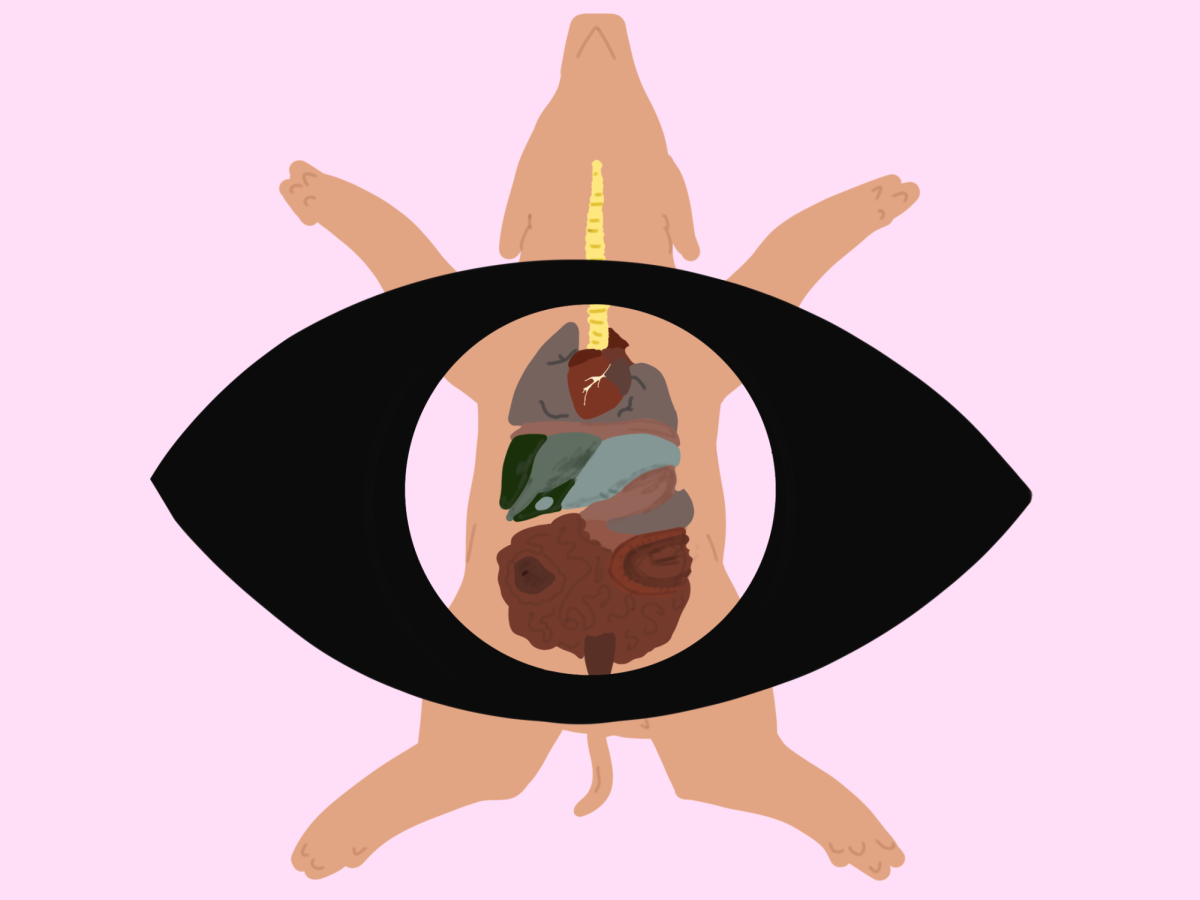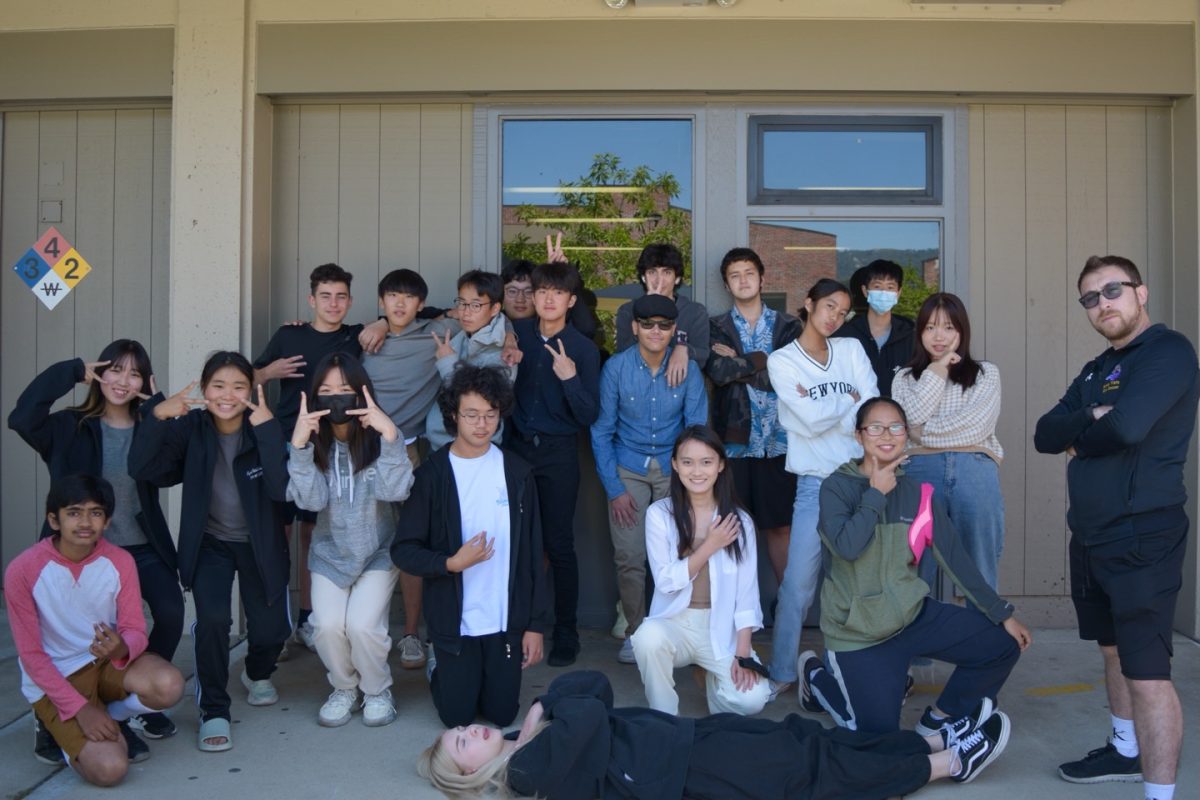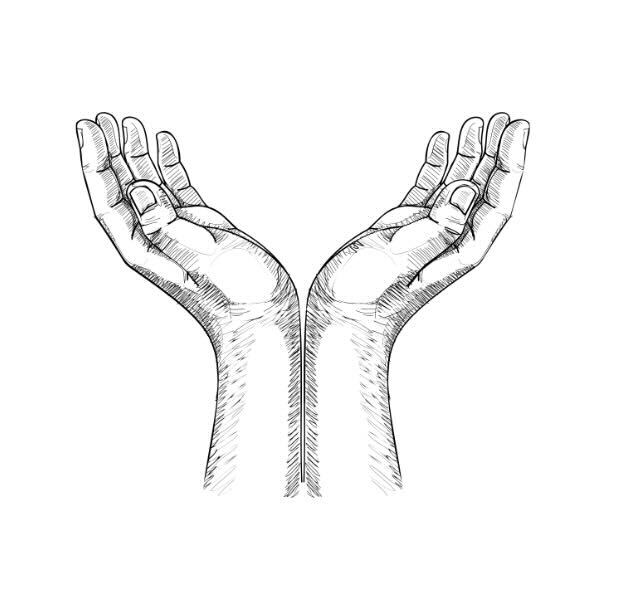With their sleeves rolled back and a scalpel in hand, junior Alex Sharma, then a freshman in the 9th-grade Biology course’s Physiology unit, took on the team’s surgeon role. Their mind spinning with excitement and a tinge of anxiety, Sharma made slow cuts through the fetal pig’s skin, revealing the small intestine and heart, which they further dissected to exhibit each of the four chambers — the atria and ventricles.
Sharma attributes their experience performing the dissection to their hope of entering the medical field as a surgeon in the future. They add that even if dissections may not be the most “glamorous,” dissecting is still a vital lab skill taught in traditional life science classes such as Biology and Physiology.
“I enjoyed doing the dissection itself, but I also enjoyed learning about the different body parts and connecting them to what I was seeing,” Sharma said. ”I think it’s important for kids to at least have that opportunity and that experience to be able to see and be like, ‘If I enjoy it, then maybe this could be something I do later in life.’”
However, they acknowledge that students have varying levels of comfort with the dissection, recalling seeing upset students when they were a TA. Senior Sarah Golonka is one of those who dislikes such labs and recalls that she felt faint and nauseous even just watching the instructional video. While she did not opt out, Golonka says that the end of the unit was somewhat of a blessing, as it was a relief not to have to go through the experience again.
“I just think the animal should have been left alone,” Golonka said. “I know we focus on researching, but we’re just kids. If you were working a surgical job, maybe that’s OK, but we’re just high school students who are still figuring out what we want. And just dissecting an animal — really? We don’t need to do that.”
According to Biology teacher Kyle Jones, who has been conducting the fetal pig dissection with his students for 14 years, the pigs used for the dissection are bought from Carolina Biological Supply, which states on its website, “Carolina’s preserved pigs were not raised for the purpose of dissection; they are a byproduct of the pork industry. Most of the pigs were stillborn and would be discarded were they not reutilized for educational purposes.” Jones acknowledges that he was not as thoughtful about the ethics of sourcing dissection subjects as a Biology major in college, where he participated in cat and human cadaver dissections. He adds that while some of this is attributed to him simply not taking the time to reflect on such issues, his school also failed to have it brought up as a topic of conversation.
“I do remember them talking about where the human cadavers came from,” Jones said. “Those were people who donated their bodies to the university or to science and had, ahead of time and prior to their death, consented to that being something they wanted to do.”
MVHS’s freshman Biology classes are transparent about where the school sources its fetal pigs. However, Jones addresses that “getting into the philosophy and ethics” of animal well-being is a tricky and multifaceted topic to bring up to students. He says doing so would require setting aside multiple periods of class time to address it without doing the actual lab, which would disrupt the structure of the class.
“Even though we’re dissecting animals in this class, I think it’s just too big of a topic to get into,” Jones said. “Students’ interaction with animal ethics is more related to their dietary life than dissecting a fetal pig one time; they’re gonna be eating meat hundreds, thousands of times.”
Although the curriculum is currently devoid of discussion on the complications regarding dissection ethics, students are given a series of regulations for handling the fetal pigs. For example, students were barred from naming the pig, though many still do, to avoid getting attached to it — a “good boundary to draw,” according to Sharma.
Additionally, the implementation of a strike policy contributes to maintaining a respectful dissection process, especially considering the diverse views students have about the lab experience. Any inappropriate cutting, touching or manipulating of the animal that does not strictly follow the step-by-step guide video earns a strike. With two strikes, the student or group is removed.
Moreover, if students are uncomfortable with participating in the dissection process, the biology department allows students to opt out if they are uncomfortable with the dissection for any religious or cultural reasons. In these cases, the freshmen research and learn about the different organs online through pictures and diagrams. However, despite the disparate views around dissections, Jones and Sharma ultimately believe that the real dissection experience still plays a vital role in the curriculum for the students who are comfortable with it.
“In my experience, the learning that students get out of the alternative methods is a little less engaging because it’s not real,” Jones said. “We already do a lot of screen time, and students already do a lot of simulations and animations, so the dissection unit would not really stand out as a unique experience if it were online or through pictures and diagrams.”












